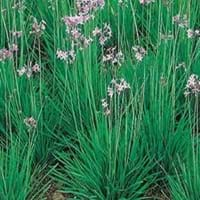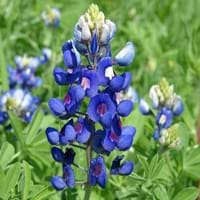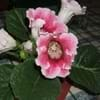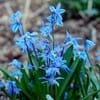Life Span
Annual
Perennial
Type
Bulb or Corm or Tuber
Flowering Plants
Origin
South Africa
Mediterranean, North Africa, Northern America
Types
Not Available
Anthony Peak Lupine, Silver Bush, Garden Lupine, Spider Lupine, Adonis Lupine
Habitat
Tropical regions, Well Drained, Wet forest
Pine barrens, Sandy areas
USDA Hardiness Zone
7-11
3-7
Sunset Zone
21,22
1a, 1b, 2a, 2b, 3a, 3b, 4, 5, 6, 7, 14, 15, 16, 17
Habit
Clump-Forming
Upright/Erect
Flower Color
White, Light Pink, Lavender
Blue, Pink, White
Flower Color Modifier
Bicolor
Not Available
Fruit Color
Yellow green
Not Available
Leaf Color in Spring
Blue Green, Gray Green
Light Green
Leaf Color in Summer
Light Green
Green
Leaf Color in Fall
Several shades of Green
Green
Leaf Color in Winter
Light Green
Not Available
Leaf Shape
Long Narrow
Oblovate
Plant Season
Summer
Summer
Sunlight
Full Sun
Full Sun, Part sun
Type of Soil
Loamy, Well drained
Loose, Moist
The pH of Soil
Neutral
Slightly Acidic
Soil Drainage
Well drained
Well drained
Bloom Time
Early Summer, Summer
Late Spring, Summer
Tolerances
Dry soil, Shade areas
Not Available
Where to Plant?
Ground
Ground
How to Plant?
Budding, From bulbs
Seedlings
Plant Maintenance
Low
Medium
Watering Requirements
Keep ground moist, Never Over-water
Form a Soil ring to water efficiently, Keep the ground moist but not water-logged, Requires a lot of watering, Water in morning to avoid prompting diseases
In Summer
Moderate
Lots of watering
In Spring
Average Water
Moderate
In Winter
Less Watering
Average Water
Soil pH
Neutral
Slightly Acidic
Soil Type
Loam, Sand
Loose, Moist
Soil Drainage Capacity
Well drained
Well drained
Sun Exposure
Full Sun
Full Sun, Part sun
Pruning
Cut out old flower stalks, Prune ocassionally
Prune ocassionally
Fertilizers
fertilize in fall, Nitrogen
All-Purpose Liquid Fertilizer
Pests and Diseases
Bacterial leaf spot, Nematodes, Purple Blotch, Red blotch, Seedcorn maggot
Aphids, Fusarium wilt, Root rot, Thripes
Plant Tolerance
Dry soil, Shade areas
Drought
Flower Petal Number
Single
Single
Fragrant Bark/Stem
Yes
No
Foliage Texture
Medium
Medium
Foliage Sheen
Matte
Matte
Attracts
Bugs, Flying insects, Insects
Bees
Allergy
Dermatitis, Pain and fatigue
Abdominal pain, Asthma, Nausea, Swelling in the face, Vomiting
Aesthetic Uses
Showy Purposes, Used in parkland
Showy Purposes
Beauty Benefits
Acne, For treating wrinkles, Making cosmetics, Removes pimples
Not Available
Environmental Uses
Indoor Air Purification, Insect Repellent
Air purification
Medicinal Uses
Acne, Aging, Antidepressant, epilepsy, Nerve pain, Obesity, Vomiting
Anthelmintic, Diuretic, Treatment of ulcers
Part of Plant Used
Bulbs
Flowers, Seeds
Other Uses
Animal Feed, Can be made into a herbal tea, Oil is used in mosquito repellents, Use in Chinese herbology, Used as Ornamental plant, Used for its medicinal properties
Showy Purposes, Used as Ornamental plant, Used for fragrance
Used As Indoor Plant
No
No
Used As Outdoor Plant
Yes
Yes
Garden Design
Edible, Herb / Vegetable
Bedding Plant, Container, Feature Plant, Foundation, Rock Garden
Botanical Name
TULBAGHIA violacea
Lupinus
Common Name
Society Garlic
Hybrid Lupine
In Hindi
लहसुन
वृक संयंत्र
In German
Knoblauch
lupine
In French
Ail
usine de lupin
In Spanish
Ajo
planta de lupino
In Greek
σκόρδο
φυτό λούπινο
In Portuguese
alho
tremoço planta
In Polish
czosnek
łubin roślin
In Latin
allium
Plinio herba
Phylum
Magnoliophyta
Magnoliophyta
Class
Liliopsida
Magnoliopsida
Family
Liliaceae
Fabaceae
Clade
Monocotyledonous
Not Available
Tribe
Not Available
Not Available
Subfamily
Lilioideae
Faboideae
Season and Care of Society Garlic and Lupine
Season and care of Society Garlic and Lupine is important to know. While considering everything about Society Garlic and Lupine Care, growing season is an essential factor. Society Garlic season is Summer and Lupine season is Summer. The type of soil for Society Garlic is Loamy, Well drained and for Lupine is Loose, Moist while the PH of soil for Society Garlic is Neutral and for Lupine is Slightly Acidic.
Society Garlic and Lupine Physical Information
Society Garlic and Lupine physical information is very important for comparison. Society Garlic height is 45.70 cm and width 2.00 cm whereas Lupine height is 2.95 cm and width 1.50 cm. The color specification of Society Garlic and Lupine are as follows:
Society Garlic flower color: White, Light Pink and Lavender
Society Garlic leaf color: Blue Green and Gray Green
Lupine flower color: Blue, Pink and White
- Lupine leaf color: Light Green
Care of Society Garlic and Lupine
Care of Society Garlic and Lupine include pruning, fertilizers, watering etc. Society Garlic pruning is done Cut out old flower stalks and Prune ocassionally and Lupine pruning is done Prune ocassionally. In summer Society Garlic needs Moderate and in winter, it needs Less Watering. Whereas, in summer Lupine needs Lots of watering and in winter, it needs Average Water.





